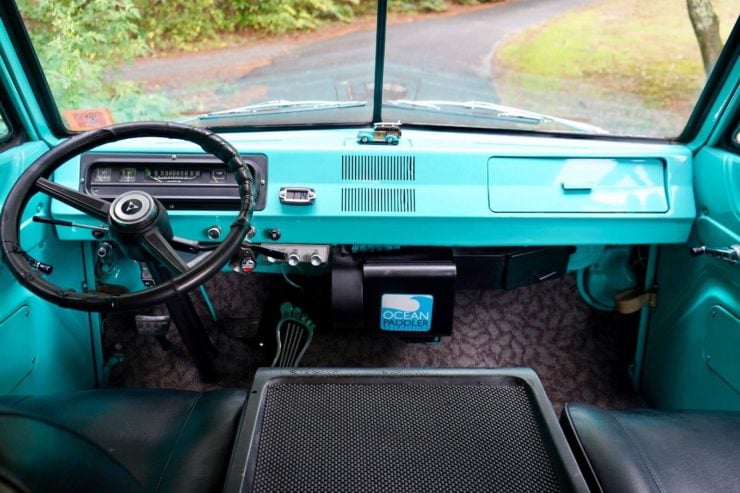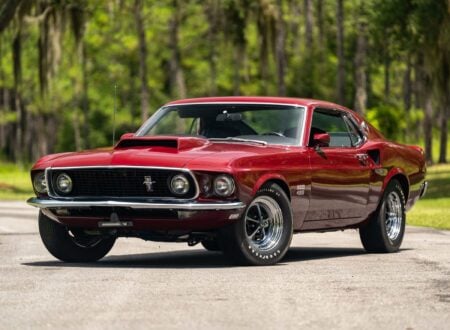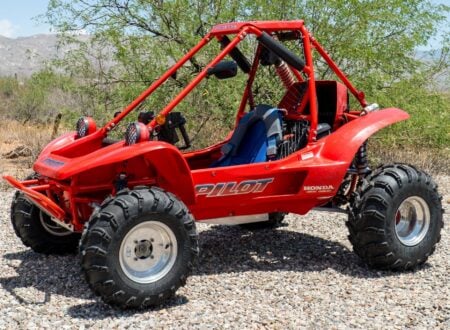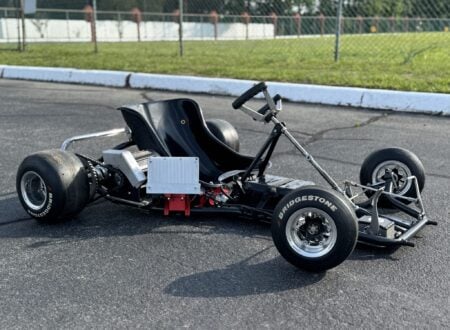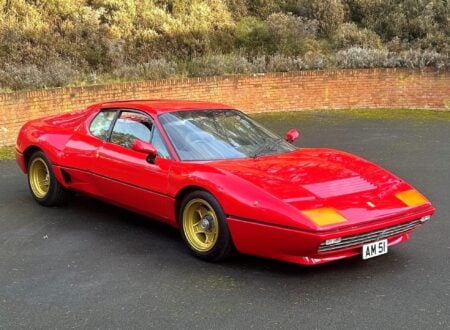This 1966 Dodge A100 remains in largely original and working condition thanks to the fact that it spent most of its life safely tucked away in a surf shop in New Jersey, away from the rain, sun, and salted roads.
It’s now being offered for sale in matching-numbers condition, powered by its original 3.7 liter slat-six offering 145 bhp and sending power to the rear wheels via a 3-speed manual transmission.
Fast Facts – The Dodge A100 Van
- The Dodge A100 series of vans and pickup trucks were released in 1964 and sold until 1970 by Chrysler under the Dodge brand in the USA, and under the Fargo brand in Canada.
- The A100 was developed to compete with the likes of the Volkswagen Type 2, as well as the Ford Econoline, Chevrolet Van, and the Chevrolet Corvair Greenbrier.
- The van was developed with a cab-over-engine (COE) layout, it had a unibody structure, rear wheel drive, and a choice of engines from a 101 bhp 2.8 liter slant-six up to a 5.2 liter V8 producing 210 bhp.
- The 1966 Dodge A100 Van you see here was sold new in San Diego, California in desert turquoise with black interior. Early on its life it was sent to New Jersey where it was a feature in a surf shop, which is why it remains so well preserved today.
The Dodge A100 Van
The 1960s were the decade that the concept of the van really came into its own. Vans had been popular for commercial purposes before this time of course, but with the explosion of the Hippie movement vans became a favorite form of both transportation and accommodation.
The Chrysler Corporation began developing the A100 in both van and pickup truck variants in the early 1960s specifically to compete with the likes of the Volkswagen Type 2, Ford Econoline, Chevrolet Van, and the Chevrolet Corvair Greenbrier.
The A100 was sold under the Dodge nameplate, and interestingly the cab would later be used on the large L-series medium-duty cabover engine Dodge trucks with a forward tilting mechanism to access the engine.
The design of the Dodge A100 was strongly influenced by other vans, particularly the VW Type 2 and the Ford Econoline. It had the same split windshield as the Type 2, similar dimensions, and body styling close to the early examples of the Ford.
A simple steel unibody structure was used for the A100, with the driver and passenger positioned up front in a cab-over-engine layout with the engine between them. This afforded maximum space for cargo in the rear for both the van and pickup truck variants.
When ordering your A100 you had the option of choosing from five engine variants (depending on year), these included the 101 bhp 2.8 liter slant-six, the 125 bhp 3.2 liter slant-six, the 145 bhp 3.7 liter plant-six, up to the 210 bhp 5.2 liter V8. There were two transmissions on offer, a three-speed manual or a three-speed automatic.
The Dodge A100 proved popular enough that the Dodge Sprinter van was developed to succeed it in 1970. The Sprinter was a larger van that would remain in production (with a number of updates) from 1970 until 2003.
The 1966 Dodge A100 Van
As noted in the introduction, this 1966 Dodge A100 has led a blessed life in a New Jersey surf shop, out of the rain and weather that caused the rusty demise of so many of its contemporaries.
It remains in largely original condition, including its eye-catching turquoise paint work and its black interior. It’s riding on period-correct chromed steel wheels fitted with staggered Mastercraft Avenger G/T tires – the fronts are 215/70/40 and the rears are 225/70/40.
This van is powered by the popular 3.7 liter slant-six sending power back through a 3-speed manual transmission, and it comes with two sets of keys, original owners manual and service manual, and the original spare wheel.
It’s currently being offered on eBay with a Buy It Now price of $24,900 USD out of Stow, Massachusetts and you can visit the listing here if you’d like to read more or make them an offer.
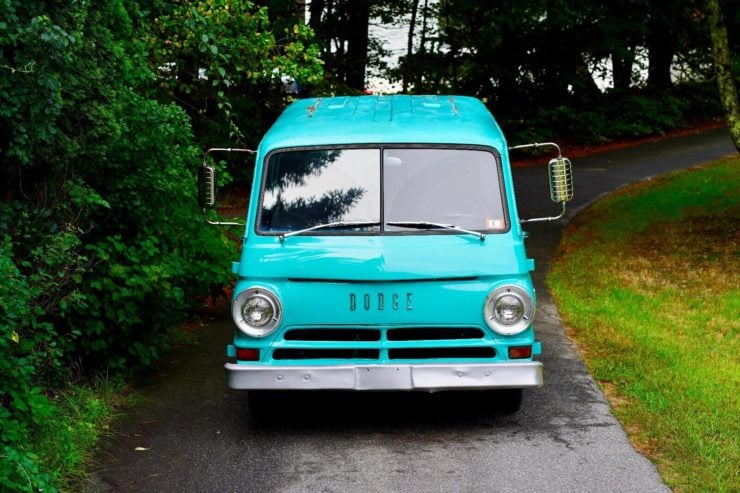
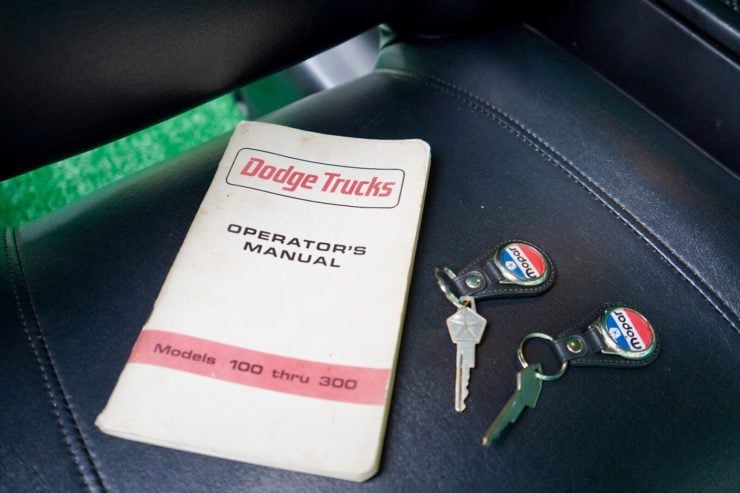
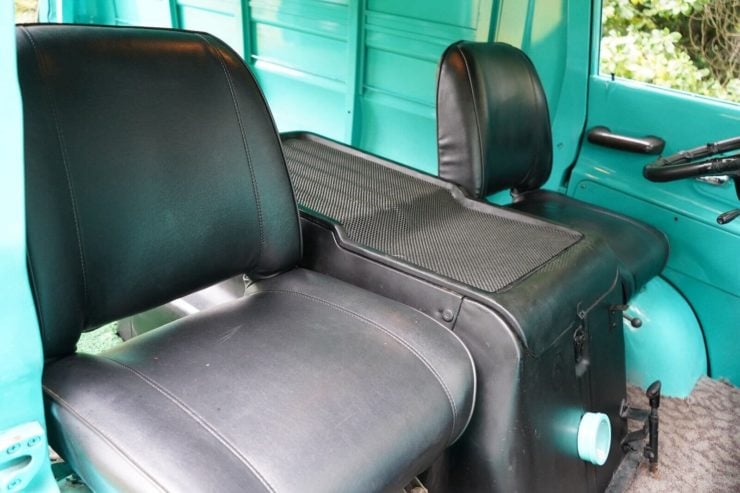
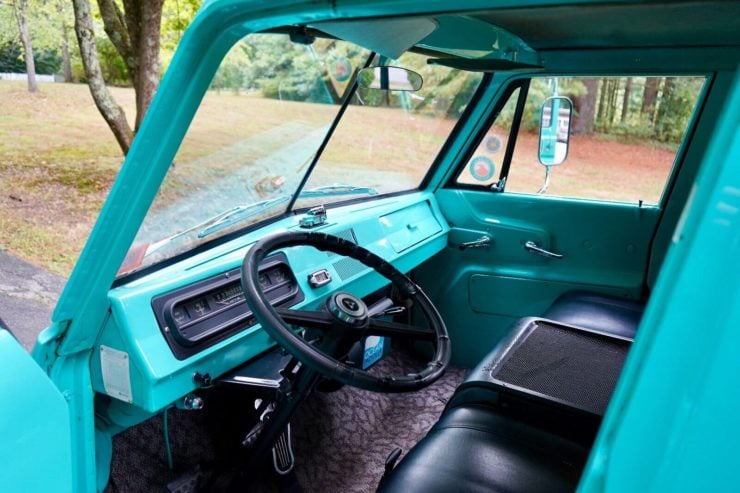
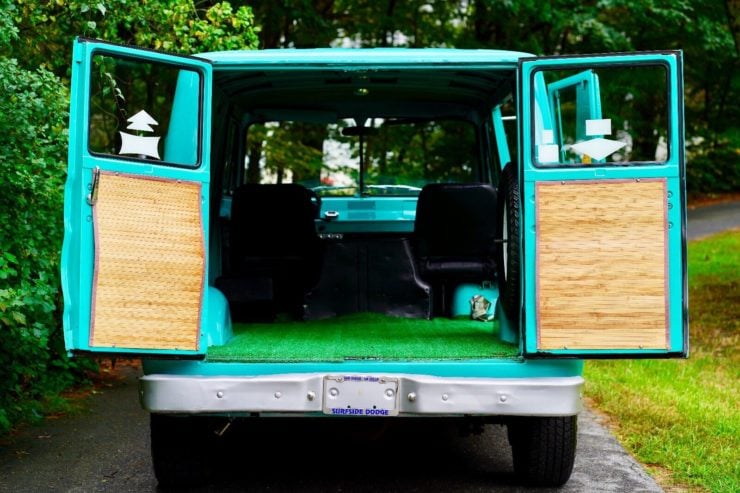
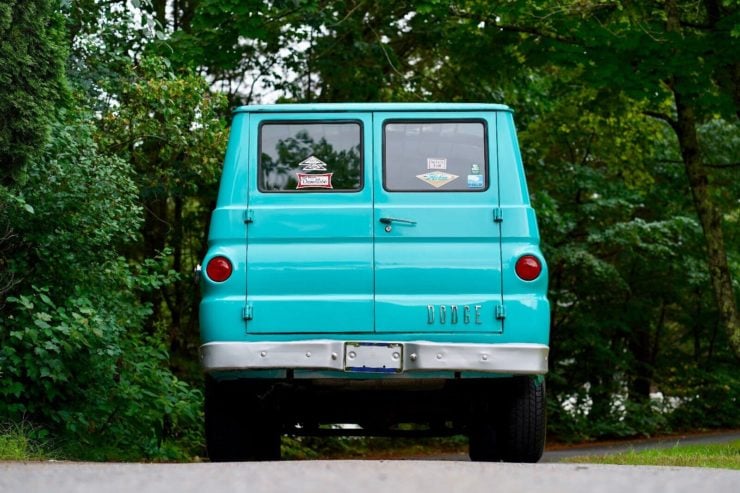
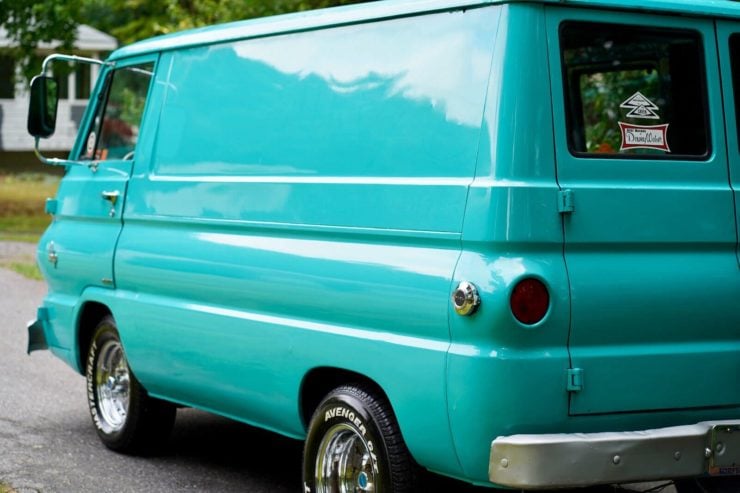
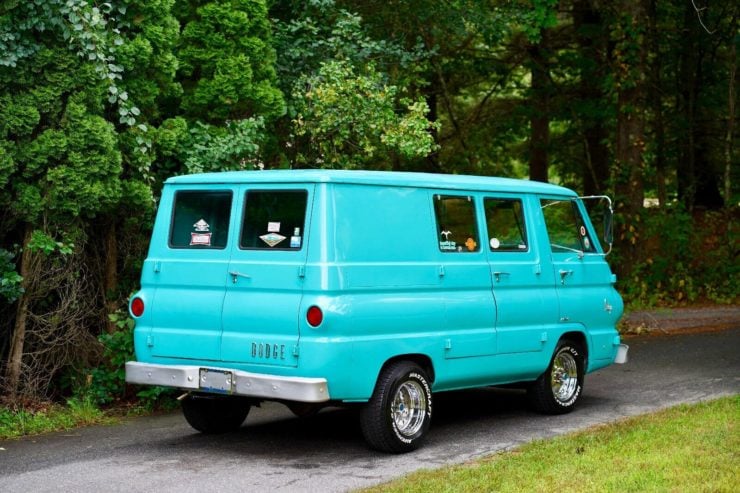
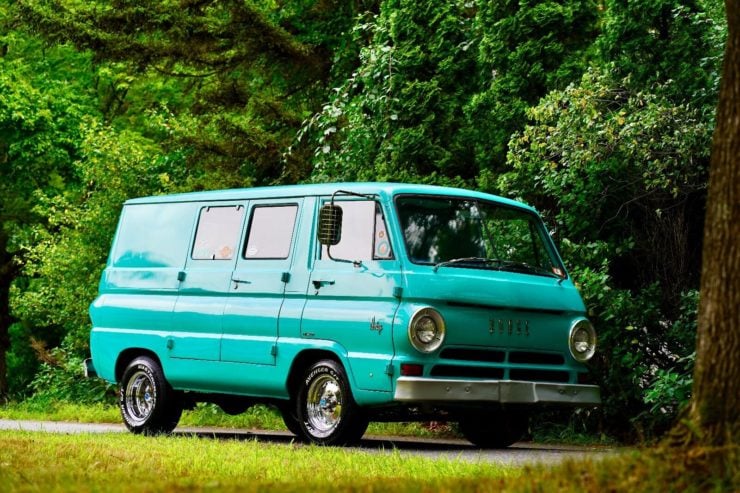
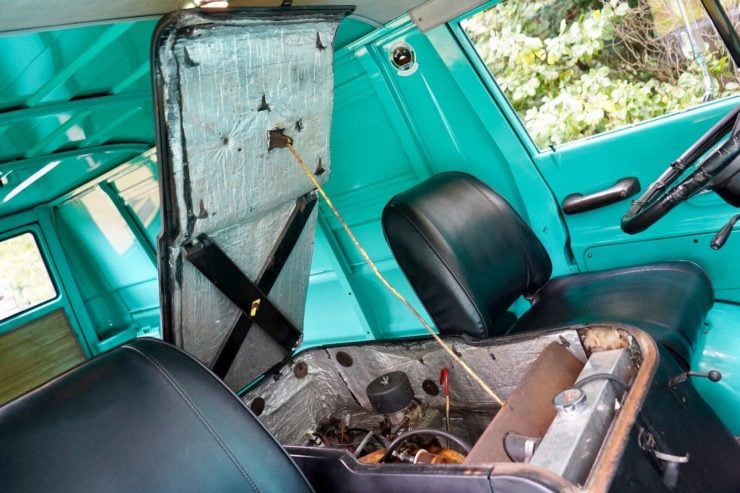
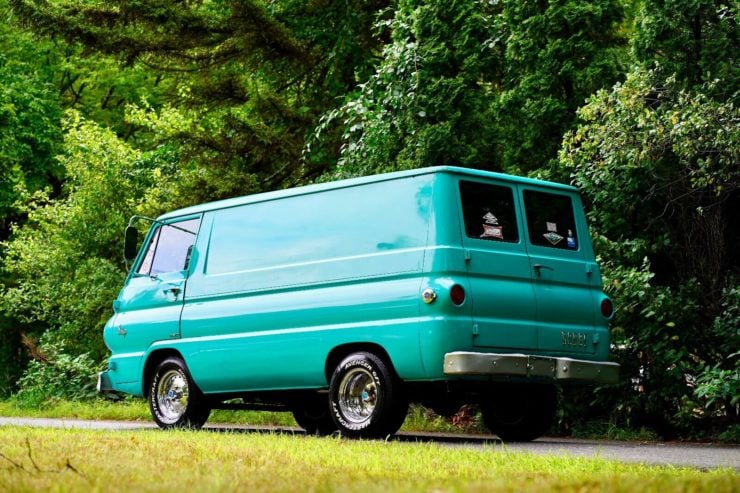
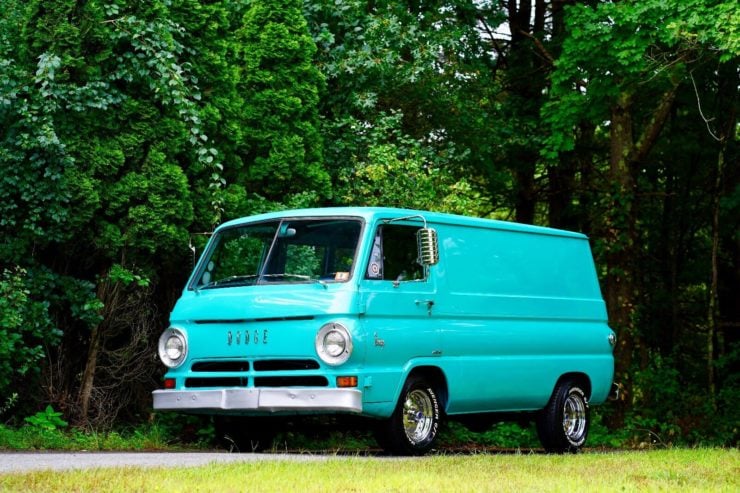
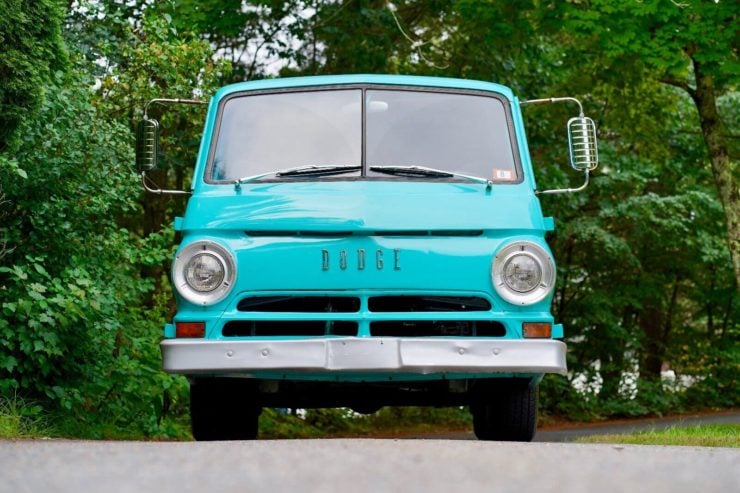
Images courtesy of Copper Creek Capital


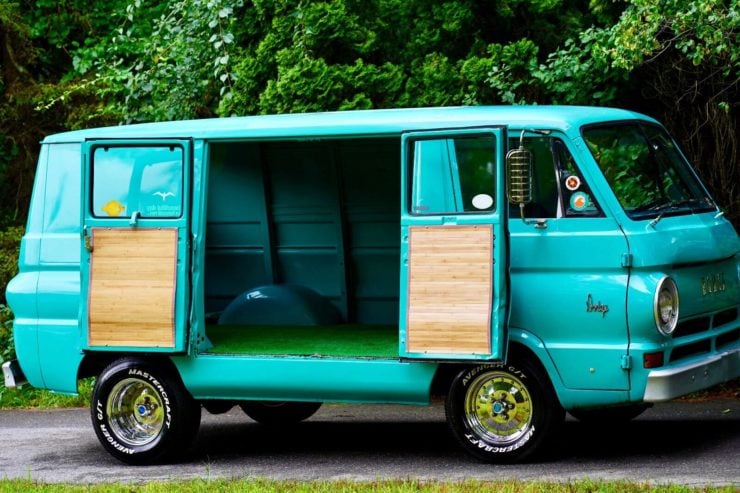
 The van has side and rear opening doors for accessing the cargo area.
The van has side and rear opening doors for accessing the cargo area.